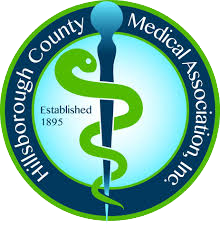 Not unlike death and taxes, joint aches and pains are a certainty in life. Years of wear and tear eventually take their toll on the body, resulting in increasingly sore or stiff joints that typically become noticeable at some point after age 50. In many cases, these joint changes can be pinned on osteoarthritis—an incredibly common degenerative condition characterized by deteriorating joint cartilage. Less of this cushioning cartilage in joints means increased friction, more pain, and reduced mobility.
Not unlike death and taxes, joint aches and pains are a certainty in life. Years of wear and tear eventually take their toll on the body, resulting in increasingly sore or stiff joints that typically become noticeable at some point after age 50. In many cases, these joint changes can be pinned on osteoarthritis—an incredibly common degenerative condition characterized by deteriorating joint cartilage. Less of this cushioning cartilage in joints means increased friction, more pain, and reduced mobility.
As the largest joint in the body, the knee is often affected by osteoarthritis. It’s a good idea to consult with an orthopedic physician if you begin to notice some of the first signs of osteoarthritis in one or both knees. These symptoms may involve:
- A dull ache that becomes sharper with activities like walking up the stairs
- Unusual tenderness after bending the knee or kneeling
- Odd sensations within the knee that result from less joint cartilage and closer contact among bones
- Reduced flexibility and range of motion following periods of inactivity
- Joint swelling that occurs or worsens with walking
- Discomfort that worsens with activity but is mild or unnoticeable during rest
As the disease progresses and joint cartilage continues to deteriorate, symptoms can occur more frequently or become increasingly severe. Pain and discomfort may be present while at rest, and knee stiffness can significantly impact mobility.
Risk Factors for Knee Osteoarthritis
Knowing your risk of knee osteoarthritis is just as important as being able to recognize the first signs. There are several factors that may leave you more likely to develop osteoarthritis, even before age 50. These factors include:
- Having a family history of osteoarthritis
- Being overweight or obese
- Having a history of joint injuries
- Frequently playing sports or participating in high-impact activities
- Being born with abnormal cartilage or joint structure
- Having a metabolic condition, such as diabetes or hemochromatosis
Our Approach to Knee Osteoarthritis Treatment
Tampa Orthopaedic & Sports Medicine Group excels in knee osteoarthritis treatment. A division of Florida Medical Clinic, our practice has been serving local families since 1949, continually providing the latest breakthroughs in orthopedic care to adolescents, adults, and seniors throughout the decades.
Knee osteoarthritis is a degenerative condition that cannot be reversed or cured. However, appropriate treatment can help slow this disease’s progression, ease painful symptoms, and increase mobility. To help our patients achieve the best possible outcomes, we offer a full spectrum of osteoarthritis therapies:
- Viscosupplementation
- Platelet rich plasma (PRP) therapy
- Stem cell therapy
- Pharmaceutical therapy
- Knee replacement surgery (arthroplasty)
If you’re experiencing early signs of knee osteoarthritis, we encourage you to consult with one of our board-certified specialists at Tampa Orthopaedic & Sports Medicine Group. We’ll take the time to listen to your concerns, determine the underlying cause of your joint pain, and develop a treatment plan that is tailored to your specific needs. Give us a call today to schedule an appointment! Or, request an appointment online at your convenience.












